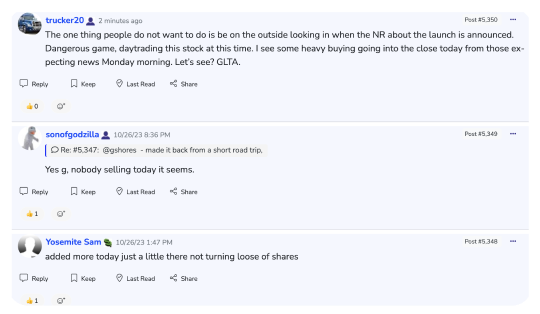Thursday, April 05, 2018 7:42:50 PM
Trading in extended hours enables investors to react quickly to events that typically occur outside regular market hours, such as earnings reports. However, liquidity may be constrained during such Form T trading, resulting in wide bid-ask spreads. Form T trading is especially suited for overseas investors, since they may conduct the bulk of their U.S. trading when their markets are open but U.S. markets are closed. The growing popularity of electronic communication networks means that Form T trading and filings are bound to continue increasing.
Form T Guidelines
In July 2011, FINRA announced a new Form T submission process, which is still in effect:
"FINRA reminds firms of their obligation to submit to FINRA on the Form T Equity Trade Reporting Form, as soon as practicable, last sale reports of over-the-counter (OTC) transactions in equity securities for which electronic submission is not possible. In addition, FINRA is announcing a new process for the electronic submission of the Form T. Firms are required to submit the Form T in accordance with this new process no later than July 5, 2011."
The new filing portal is FINRA's Firm Gateway. Finra explained: "Through the Firm Gateway, in addition to creating and submitting Form T filings electronically, firms will be able to view, edit and delete draft filings, as well as view previously submitted filings. Firms will be required to continue providing trade details on an Excel spreadsheet as part of the Form T submission. Previously, Form T submissions were done by email, and before email, via paper (email submissions were still called 'Paper Form T')."
Form T Filings: Some Lessons
In the OTC market, Form T trades are mostly the result of accumulated buys or sells handled on a not held basis by block desks, otherwise known as 'late prints.' They have nothing to do with short-selling. Large blocks of shares may not all be sold in a single day, so a broker or market maker would file a Form T for the remainder of shares listed at the average price that day's shares sold for as if they all had sold. If all the shares had sold in that one session, the transaction would have been recorded normally.
And investor sometimes can tell if a Form T transaction is by a buyer or seller by looking at the price the trades were entered at. If entered at the lower end of the day's range and the shares were under pressure, it's likely a seller. If entered at the high end of the range, and shares were surging, it's likely from a buyer.
Read more: Form T https://www.investopedia.com/terms/f/formt.asp#ixzz5BqQgxSQg
Follow us: Investopedia on Facebook
https://www.investopedia.com/terms/f/formt.asp
Peer To Peer Network aka Mobicard™ Launches AI Investor Chatbot Boosting Engagement & Lead Generation on Ihub • PTOP • Jul 15, 2024 8:30 AM
Greenlite Ventures Announces AI Integration into No Limit Platforms • GRNL • Jul 15, 2024 8:00 AM
Cannabix Technologies and Omega Laboratories Inc. Provide Positive Developments on Marijuana Breathalyzer Testing • BLO • Jul 11, 2024 8:21 AM
ECGI Holdings Enhances Board with Artificial Intelligence (AI) Expert Ahead of Allon Apparel Launch • ECGI • Jul 10, 2024 8:30 AM
Avant Technologies to Meet Unmet Needs in AI Industry While Addressing Sustainability Concerns • AVAI • Jul 10, 2024 8:00 AM
Panther Minerals Inc. Launches Investor Connect AI Chatbot for Enhanced Investor Engagement and Lead Generation • PURR • Jul 9, 2024 9:00 AM









